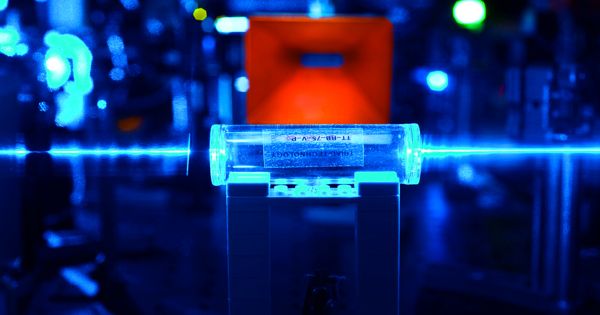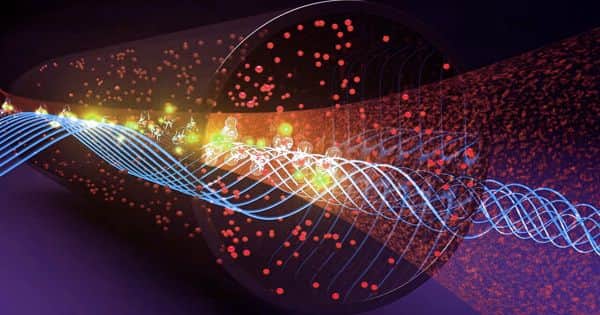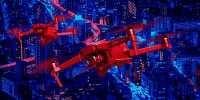A modern quantum sensor will measure the entire range of radio frequency and real-world signals, unlocking new technologies for strategic communication, spectrum knowledge, and electronic warfare. Army engineers have developed a quantum sensor that can sample radio frequency spectrum from zero to 20 GHz and track AM and FM radio, Bluetooth, Wi-Fi, and other communication signals.
The Rydberg sensor uses laser beams to generate highly excited Rydberg atoms immediately above the microwave circuit, to raise and hone the portion of the spectrum being tested. The Rydberg atoms are sensitive to the voltage of the circuit, allowing the instrument to be used as a sensitive probe for a wide variety of signals in the RF spectrum.
A new quantum sensor has been developed which could detect the RF spectrum and many real-world signals. Researchers have developed this quantum sensor that could sample the RF spectrum from zero to 20GHz. Also, it could detect communication signals, FM, and AM radio.
“All previous demonstrations of Rydberg atomic sensors have only been able to sense small and specific regions of the RF spectrum, but our sensor now operates continuously over a wide frequency range for the first time,” said Dr. Kevin Cox, a researcher at the U.S. Army Combat Capabilities Development Command, now known as DEVCOM, Army Research Laboratory. “This is a really important step toward proving that quantum sensors can provide a new, and dominant, set of capabilities for our Soldiers, who are operating in an increasingly complex electro-magnetic battlespace.”
To calculate the portion of the spectrum, the Rydberg sensor uses the laser beams that contain Rydberg atoms above the microwave circuit. The Rydberg atoms, being sensitive to the circuit voltage, allow the instrument to be used as a sensitive probe for the range of signals in the RF spectrum.

The Rydberg spectrum analyzer has the ability to solve the inherent shortcomings of conventional electronics in sensitivity, bandwidth, and frequency range. As a result, the Rydberg Lab Spectrum Analyzer and other quantum sensors have the ability to open a new boundary of Army Sensors for spectrum understanding, electronic warfare, sensing, and communication-part of the Army’s modernization plan. The Rydberg spectrum analyzer was able to reduce the shortcomings of electronics in the frequency range, bandwidth, and sensitivity. The quantum sensors developed could provide greater sensitivity and accuracy for the detection of contact signals.
Researchers are now focused on improvements in the Rydberg spectrum analyzer to improve its signal response. “Devices that are based on quantum constituents are one of the Army’s top priorities to enable technical surprise in the competitive future battlespace,” said Army researcher Dr. David Meyer. “Quantum sensors in general, including the one demonstrated here, offer unparalleled sensitivity and accuracy to detect a wide range of mission-critical signals.”
The peer-reviewed journal Physical Review Applied published the study results, ‘Waveguide-coupled Rydberg spectrum analyzer from 0 to 20 gigahertz,’ co-authored by Army researchers Drs. David Meyer, Paul Kunz, Kevin Cox. The researchers are planning further improvements to boost the signal sensitivity of the Rydberg spectrum analyzer with a view to surpassing current state-of-the-art technology.
Army Researcher Cox said that “both engineering and physics is essential to make the Rydberg analyzer to be integrated to the testable device. As a first step, we must understand how to improve the device performance, when the sensor size gets decreased. The Army is one of the developers of Rydberg sensors and they expect more research to the technology to make it to reality.”
“Significant physics and engineering effort is still necessary before the Rydberg analyzer can integrate into a field-testable device,” Cox said. “One of the first steps will be understanding how to retain and improve the device’s performance as the sensor size is decreased. The Army has emerged as a leading developer of Rydberg sensors, and we expect more cutting-edge research to result as this futuristic technology concept quickly becomes a reality.”















